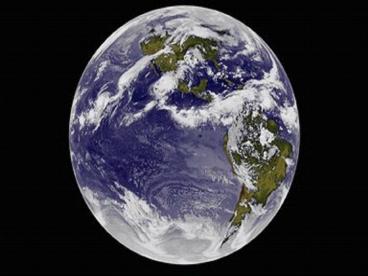Introduction to Oceanography - PowerPoint PPT Presentation
1 / 20
Title:
Introduction to Oceanography
Description:
Over 97% of all the water on or near Earth's surface is contained ... heat, gravitational compression and radioactive decay caused the Earth to partially melt. ... – PowerPoint PPT presentation
Number of Views:1065
Avg rating:3.0/5.0
Title: Introduction to Oceanography
1
(No Transcript)
2
Introduction to Oceanography
- The Water Planet
3
The Water Planet
- Over 97 of all the water on or near Earths
surface is contained in the ocean basins. - Approximately 70.78 of the surface of the Earth
is covered with water. - Historically we have divided the ocean into
artificial compartments called oceans and seas.
4
The Water Planet
- There are few great natural divisions to separate
the on great mass of water on planet Earth. - The Mediterranean and Baltic seas are only
temporary features of a single - World Ocean
5
The Water Planet
- The ocean is massive from a human perspective
- It covers 361 million square kilometers of the
Earths surface - The average depth of the ocean is about 3, 7896
(rounded to 4,000) meters - The average temperature is 3.9-degrees C
(39-degrees F)
6
The Water Planet
7
The Water Planet
- The deepest spot in the world ocean is known as
the Mariana Trench. It is 11,022 meters (36,163
feet) from the surface - The Northern Hemisphere is 60.7 sea and 39.3
land - The Southern Hemisphere is 80.9 sea and 19.1
land
8
The Water Planet
- The theory which explains the origin of the
universe is called the big bang theory. - The big bang probably occurred about 15 billion
years ago. - The very early universe was unimaginably hot, but
as it expanded it cooled.
9
The Water Planet
- About a million years after the big bang,
temperatures fell enough to permit the formation
of atoms from the energy and particles that had
predominated up to that time. - About a billion years after the big bang, this
matter began to congeal into the first galaxies
and stars.
10
A Spiral Galaxy
11
The Water Planet
- Our sun is a typical middle aged star
- The sun and its family of planets, called the
solar system, are located about three quarters of
the way out from the center of the galaxy.
12
The Water Planet
- Accretion of cold particles created the young
earth. - In the midst of the accretion phase, the earths
surface was heated by the impact of meteors and
other falling debris. - This heat, gravitational compression and
radioactive decay caused the Earth to partially
melt.
13
The Water Planet
- Gravity pulled most of the iron inward to form
the planets core. - The sinking iron released huge amounts of
gravitational energy, which, through friction
heated the Earth even more. - A slush of lighter minerals like silicone,
magnesium, aluminum and oxygen-bonded compounds
migrated to the surface.
14
The Water Planet
- This process of density stratification lasted
about 100 million years. - The earth began to cool and its first surface is
thought to have formed about 4.6 billion years
ago. - Erupting volcanoes vented volatile gasses
(outgassing) which condensed into clouds in the
cooler upper atmosphere.
15
The Water Planet
- After millions of years the upper clouds began
to cool enough for some of the outgassed water to
form droplets. - These heavy rains may have lasted about 10
million years. - Some recent studies suggest that the Earths
entire surface may have been covered with water
for 200 million years
16
The Water Planet
- The primitive atmosphere was much different from
our atmosphere today. - The primitive atmosphere was rich in carbon
dioxide, water vapor, carbon monoxide, nitrogen,
hydrogen chloride, with traces of ammonia and
methane.
17
The Water Planet
- It was from this primitive atmosphere that life
arose in the primitive seas. - The first life forms were simple single celled
bacteria. - These organisms lived in an environment devoid of
free oxygen. - They are said to be anaerobic.
18
The Water Planet
- Later some of these single celled organisms
incorporated chlorophyll into their cells and
produced atmospheric oxygen by photosynthesis. - The oxygen in the atmosphere was poisonous to the
earlier single celled organisms and many died off.
19
The Water Planet
- The new life forms. Living in the presence of
oxygen, diversified and evolved into the
multitude of variety of life present on the
planet today and many that have become extinct.
20
The Water Planet
- The End































